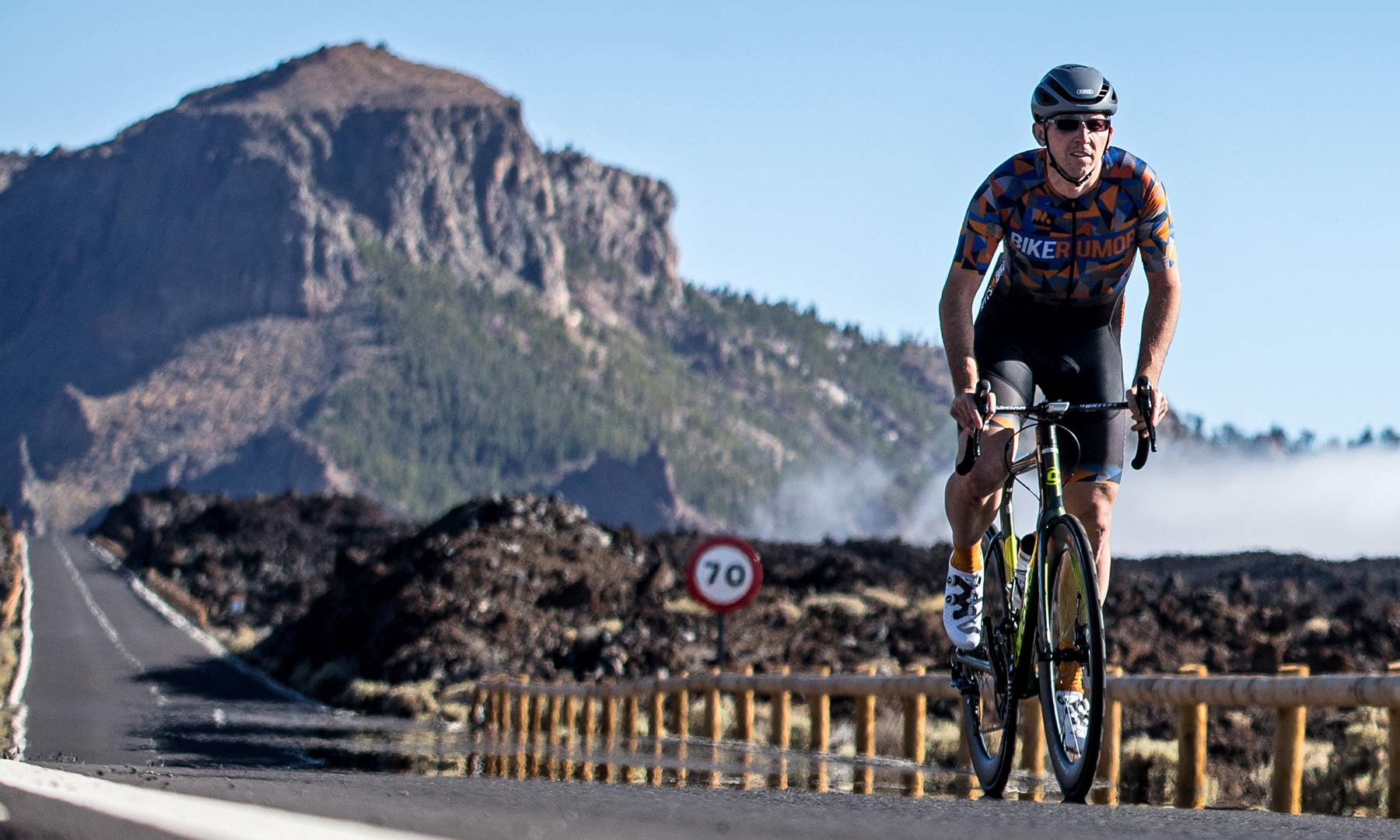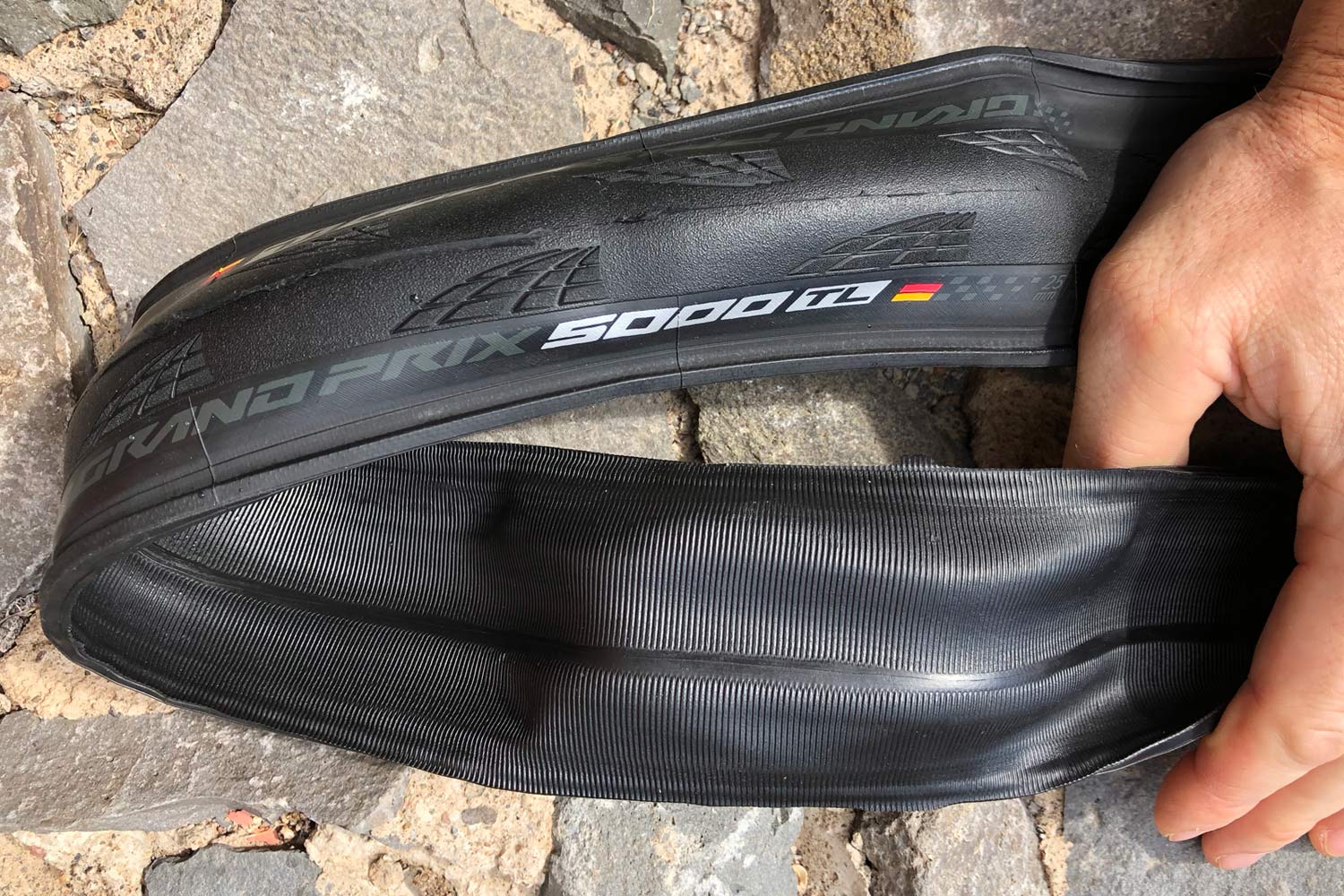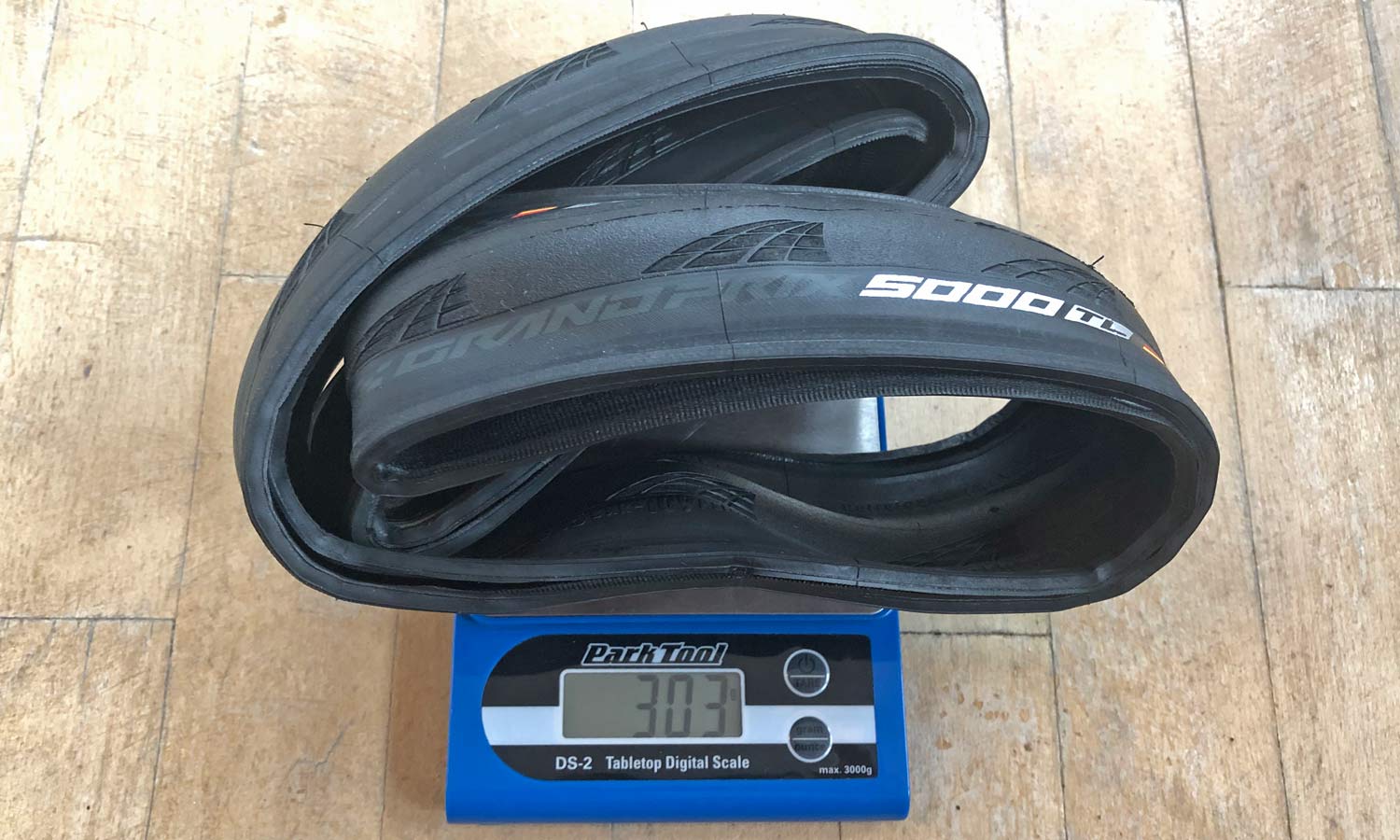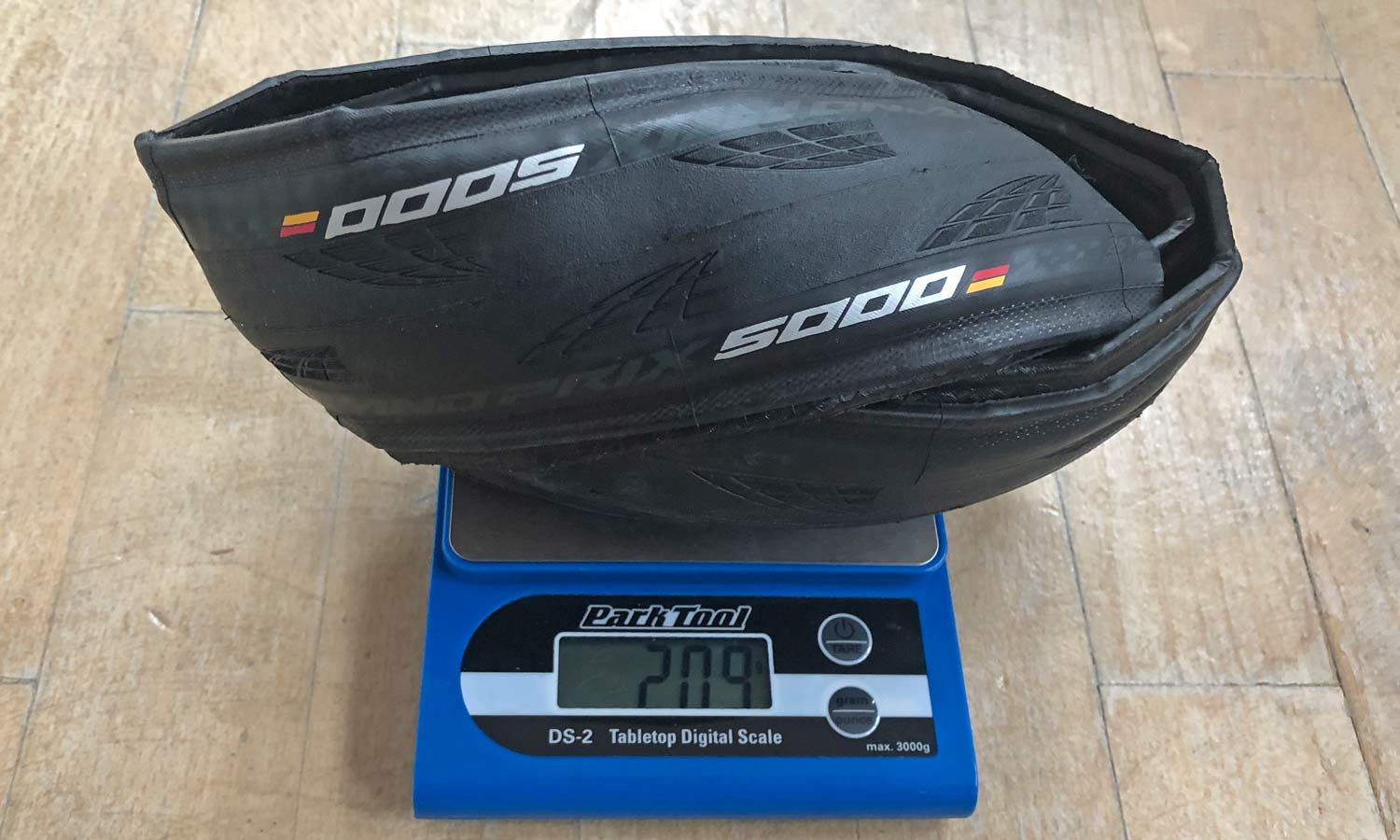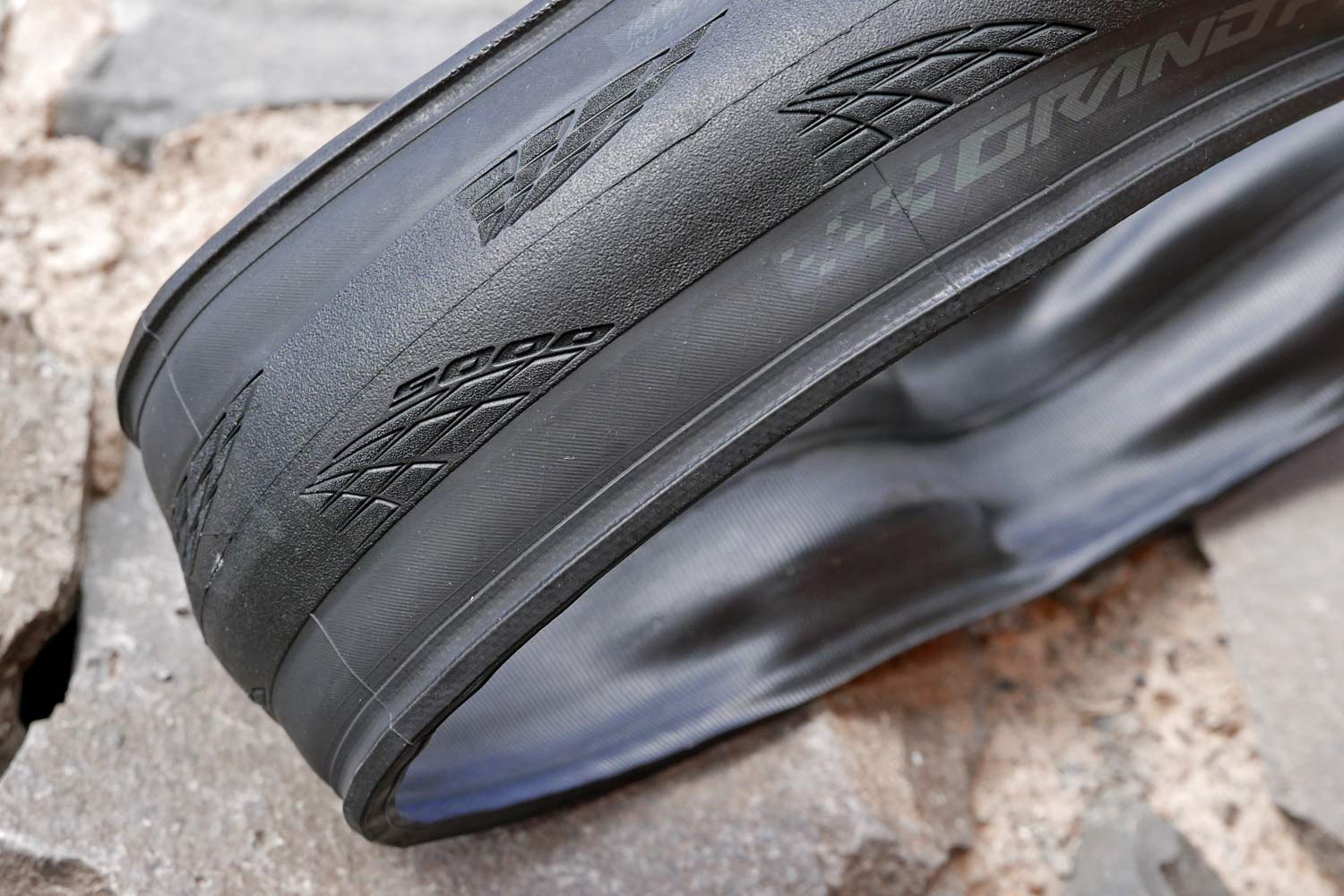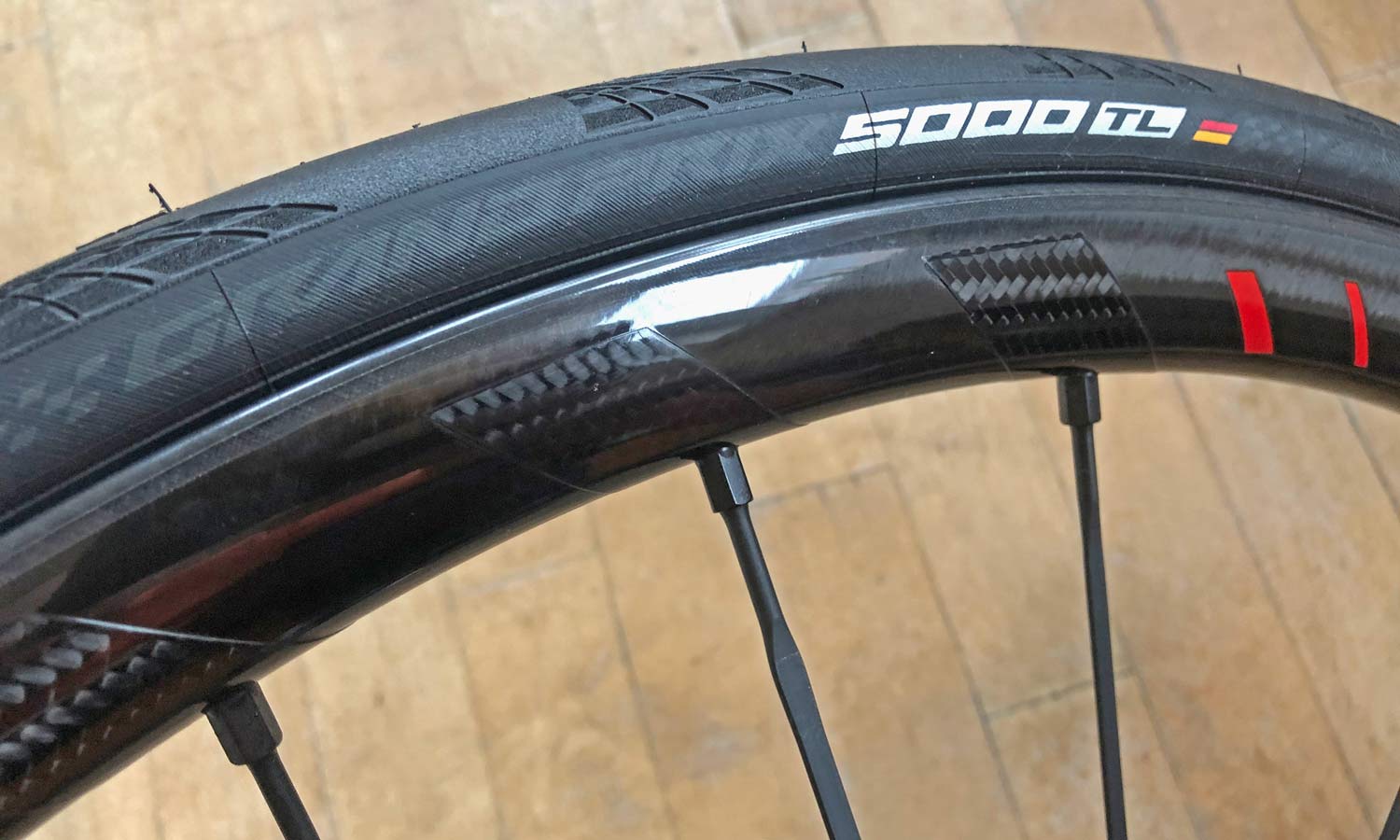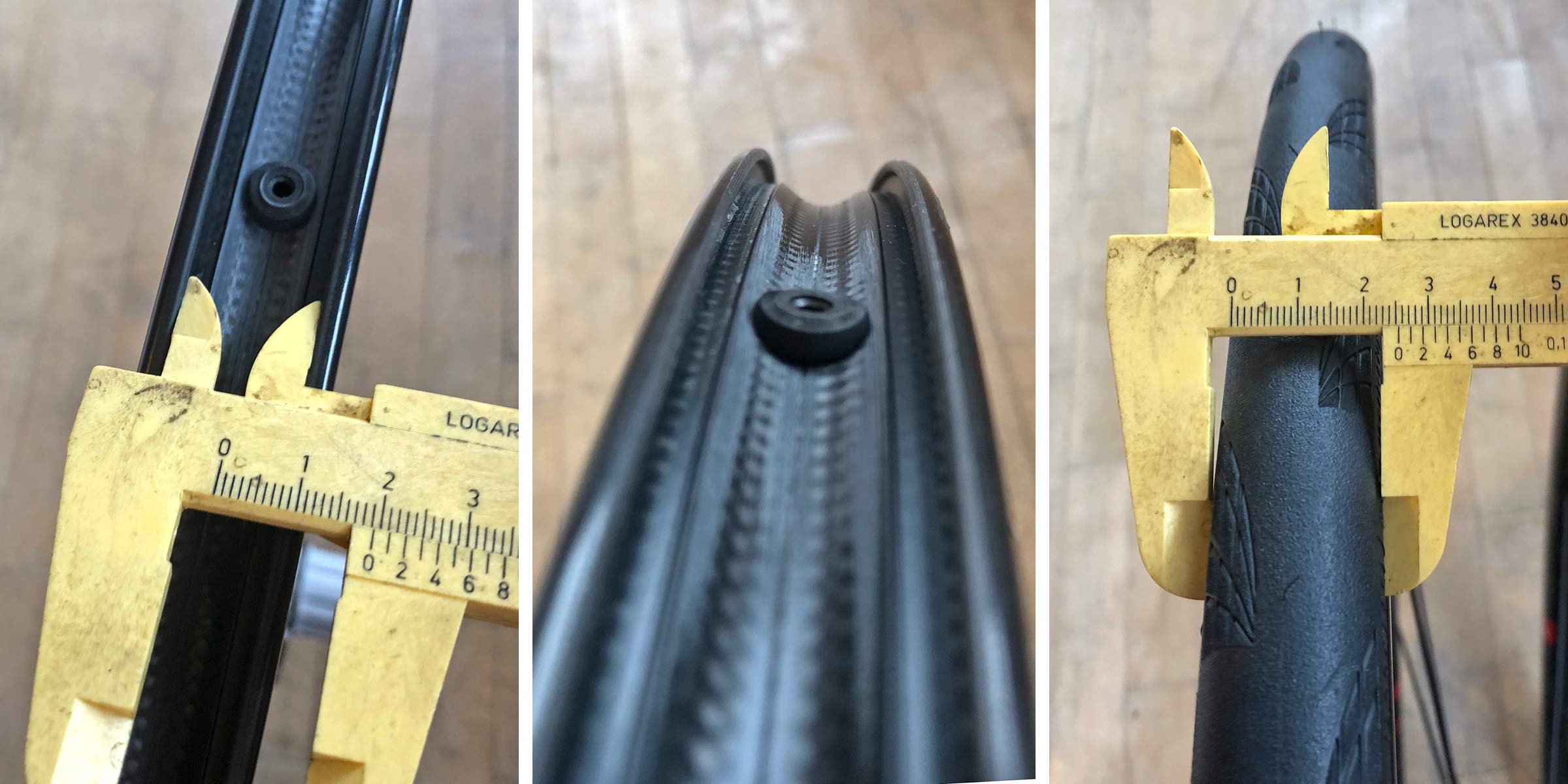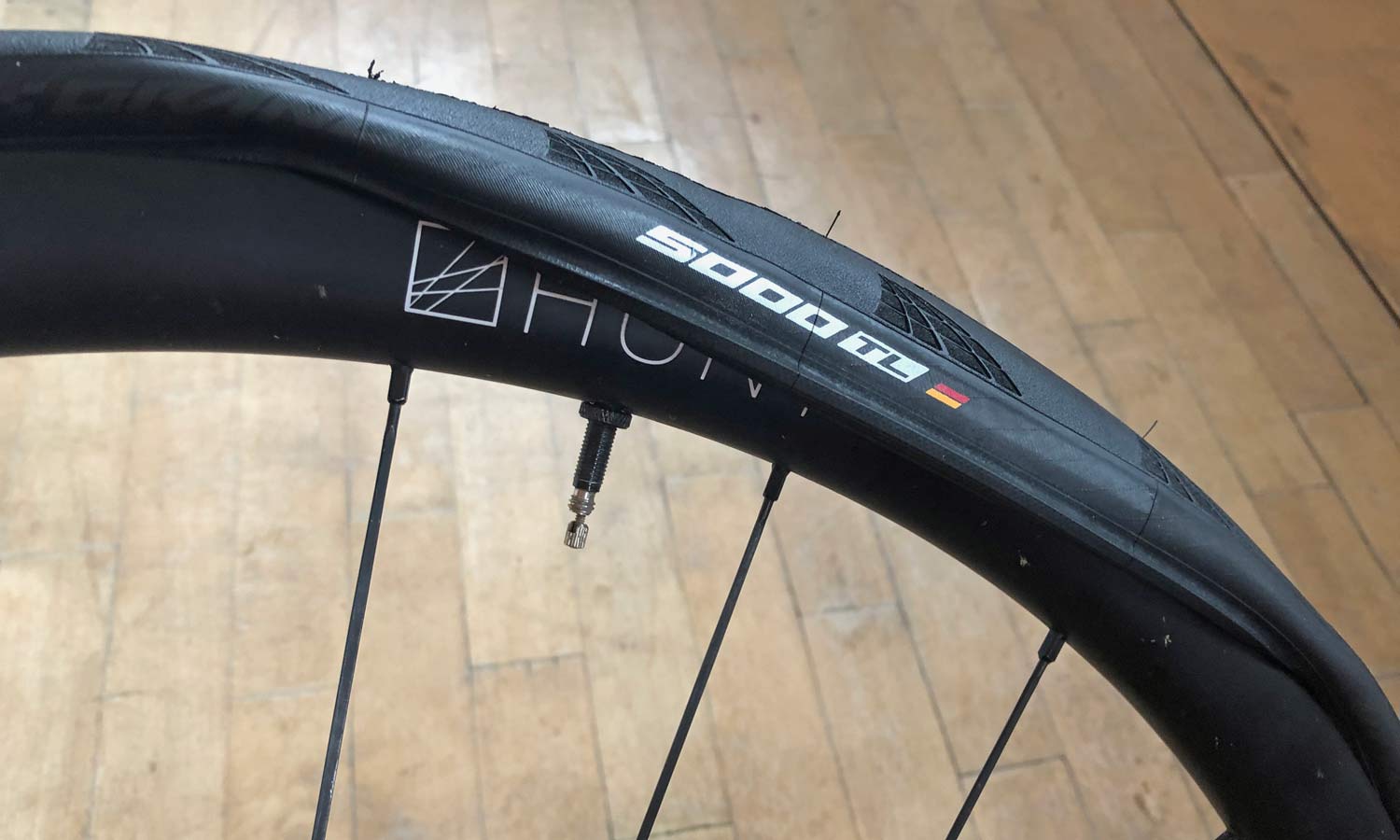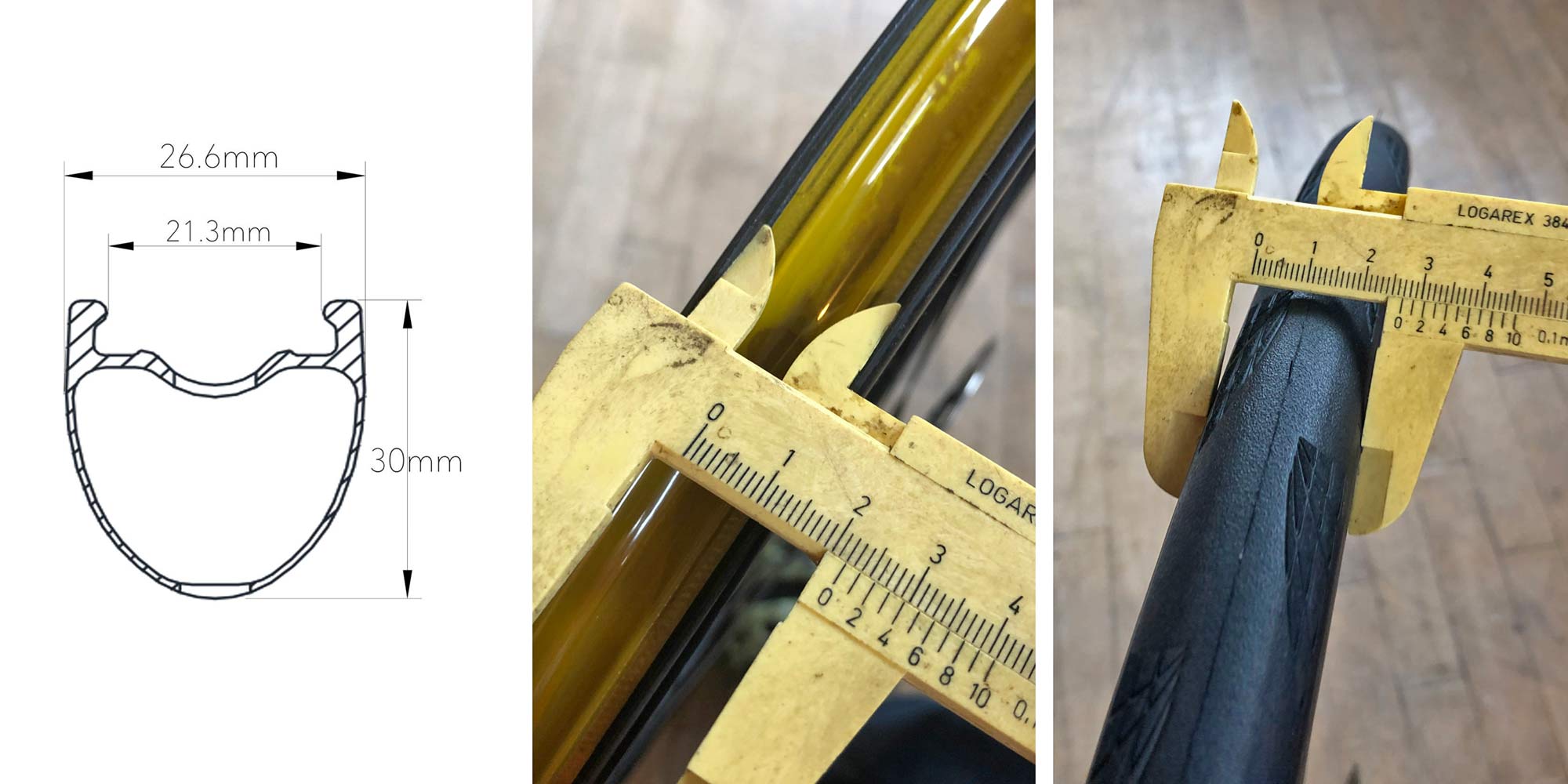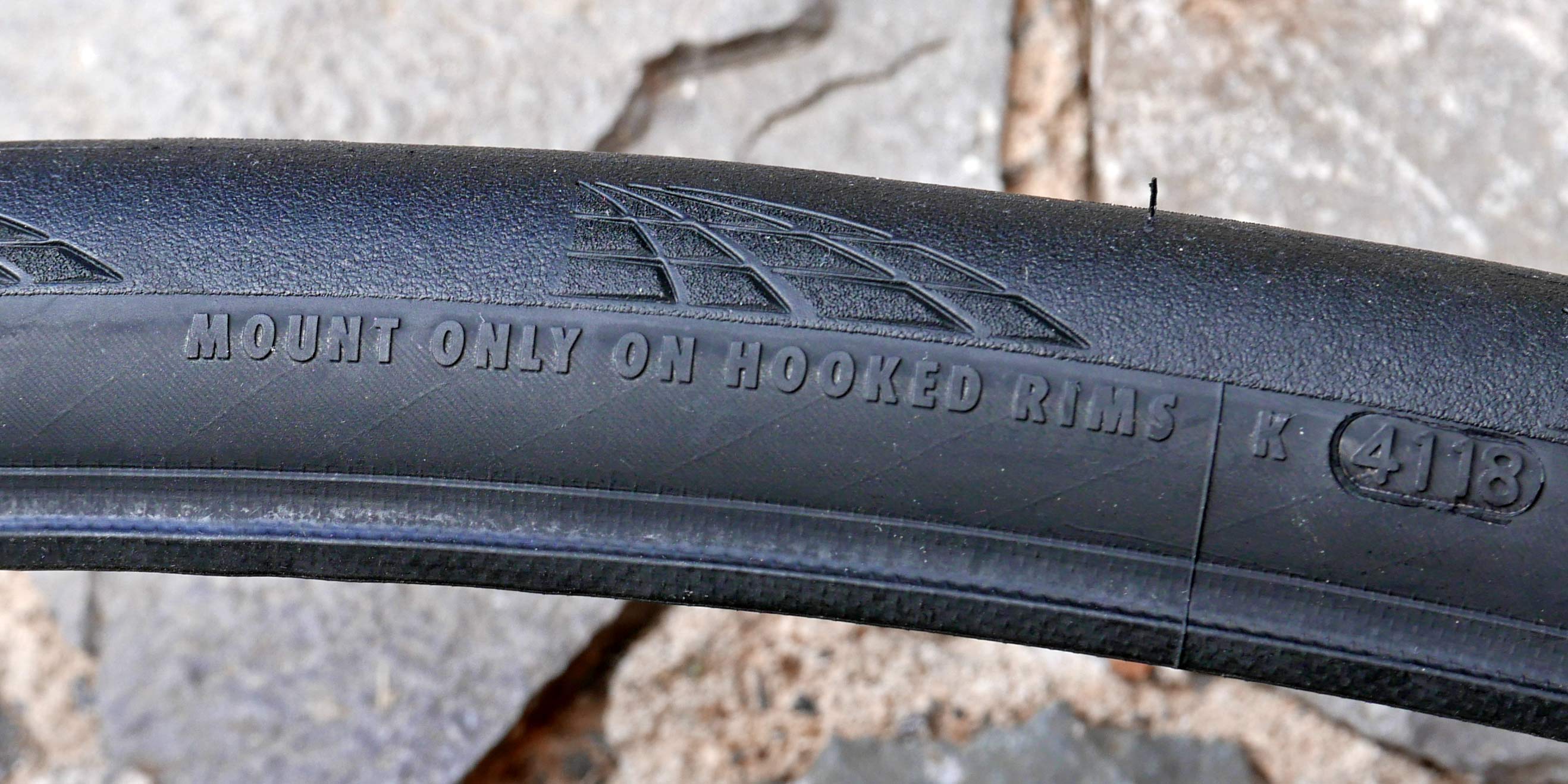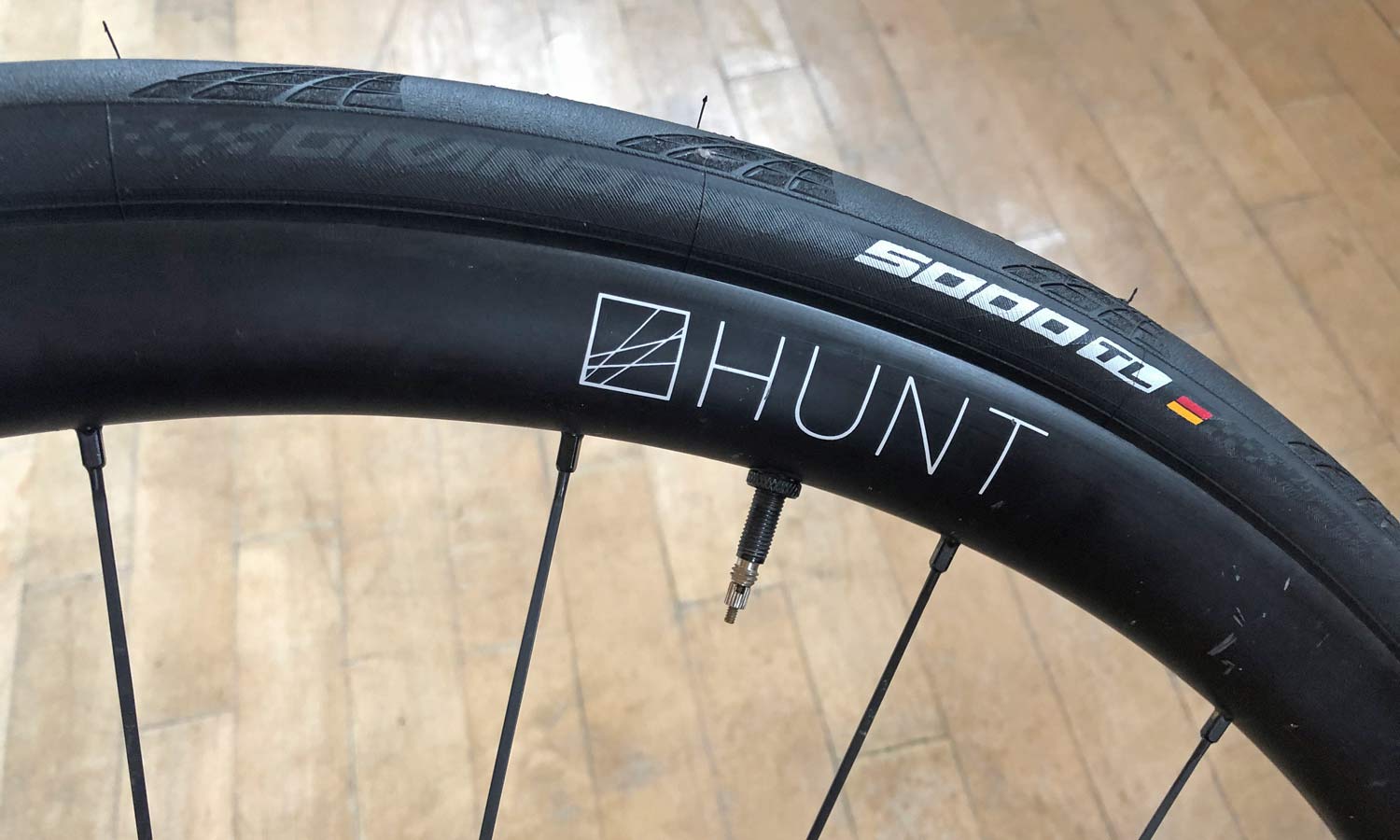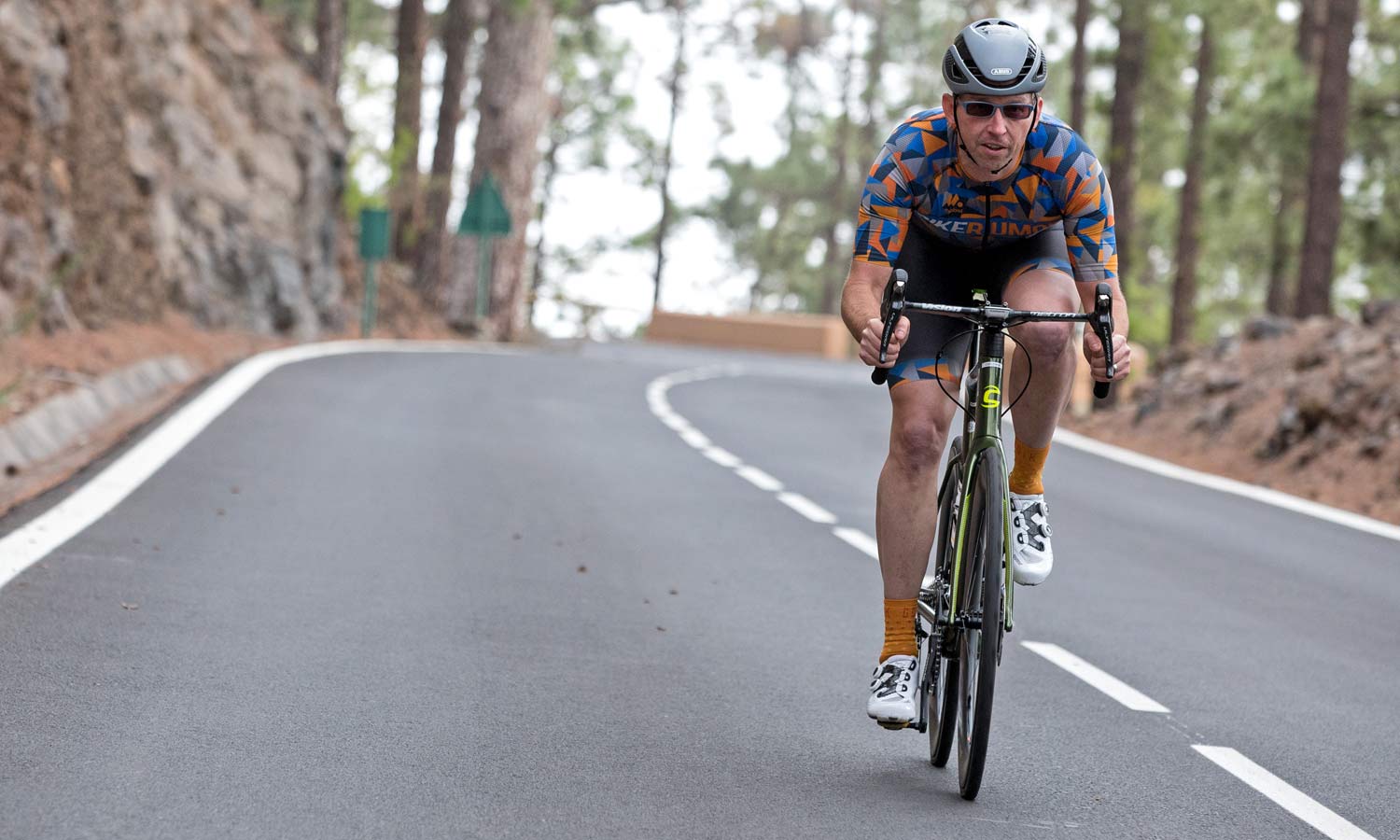Two weeks ago we saw Continental finally overcome their own resistance with the introduction of a tubeless version of their Grand Prix all-rounder road tire. Claiming to be better in every way than its predecessor, the new GP 5000 TL also adds a fully tubeless construction that Conti promises will take away all the hassles and uncertainties of road tubeless. So how does it do?
Continental GP 5000 TL all-around performance road tubeless tires
The new tubeless Grand Prix 5000 TL tire promises much improved performance over Conti’s long-running benchmark GP 4000 SII road tire. The move to tubeless brought with it a complete casing and rubber overhaul claiming 18% improved rolling resistance, 26% better puncture resistance (before even accounting for sealant), plus more comfort thanks to a new Active Comfort construction that is said to damp vibration through the use of stiffer sidewalls and more flexible casing under the tread. (Full details on the new tire in our original debut article.) All that sounded great – if a bit hyperbolic at times – so we were anxious to ride them.
Continental GP 5000 TL vs. GP 5000 – Actual Weights
The new GP 5000 TL has a claimed weight of 300g for a 25mm tire, which makes it a bit heavier than other claimed weights for similar levels of all around performance tubeless-ready road tires. For example, the same size Schwalbe Pro One tire claims a weight of 260g, but that tire is ‘Tubeless Easy’ meaning it still requires sealant to maintain an airtight casing. On our scale the 25mm GP 5000 TL weighed 303g (vs. a real weight of 262g for that 25mm Pro One.)
Looking to the regular tube-type Grand Prix which shares much of the same new tech, without the sealed tubeless liner and more bulky tubeless bead, the 25mm GP 5000 weighed a third less at 209g, a bit lighter than the 215g Conti claimed.
First Tubeless Setup Impressions – Continental GP 5000 TL
Continental talked a big game about how easy the new GP 5000 TL was going to be to install, so I was really curious to try it for myself. Just this week, we got one of the first sets of production tubeless tires in the office, so I set about with trying the install on two different road tubeless wheelsets.
First up was a brand new Fulcrum Racing Zero Carbon DB wheelset debuted earlier this fall. With a real 19.2mm internal width, a decently deep center channel, prominent bead-lock lip on the shoulders, a big bead hook, and Campagnolo’s lack of spoke holes in the rim bed, I was optimistic for the pain-free installation.
Unfortunately, the fit of the GP 5000 TL was too tight. And even starting opposite the valve I couldn’t get the tire on completely without a lever. No worries, a plastic lever easily got the tire in place. But again that big shoulder lip made it hard to get the tire entirely in place by hand, and I needed a compressed air cylinder to seat the bead. No luck with a floor pump alone, but the tires did air up true to size at 25.3mm.
Slightly dejected, I tried again with another wheelset, here the Hunt 30 Carbon Aero Disc wheels that I had already ridden tubeless with several other tires from ERE Research, Schwalbe & WTB. This time the fit of the GP 5000 TL was still very tight, but I managed to get the tire on without levers.
The Hunt rims are a bit wider at 22mm internal and have a less dramatic bead hook (but it is hooked, unlike the early/pre-production wheels.) Also since they use tubeless rim tape to seal over the spoke holes, even though it also has a bead-lock lip on the shoulders the lip is more smooth and easier to slide the tire over. This time (again with the valve core removed) I was able to easily seat the new Conti tire with three quick pumps of my floor pump. Success! (Final real tire width measurement of 26.7mm on the Hunts.)
Twenty-four hours later with no sealant installed, the Conti tire still held the full 90psi that I pumped it up to. And when I tried to fit another brand’s road tubeless tire to the new Fulcrum wheel, I had the same initial difficulty (so not a Conti-only issue, there.)
The takeaway? The Continental GP 5000 TL isn’t magic. It doesn’t remove all complication and variability from the road tubeless installation process. Continental talked about the tires working with every major tubeless road wheel on the market. But until the ETRTO or some other industry group once and for all declares hard and fast standards for tubeless tire bead and tubeless rim dimensions, there will continue to be variation in how easy and predictable road tubeless setup becomes.
As it stands, the Continental GP 5000 TL seems from our first impressions to be as easy to work with as the best of other road tubeless tires currently on the market.
First Riding Impressions – Continental GP 5000 TL

Onto actually riding the tires… I’ve now have put in a mix of kilometers riding the new tubeless Continental GP 5000 TL tires on smooth dry Canary Island climbs, twisty damp descents, plus rough, wet & slightly above freezing central European roads. So far the tires do feel quick, and the cornering grip is real. I’ve even taken them through a bit of light dirt and gravel (I can’t help myself), and they seem hard to beat across all surfaces.
Can I perceive what is claimed to be 18% less rolling resistance and 26% greater puncture resistance? Nope. Should I really be able to? Well, that seems like a lot, and I didn’t set any new personal bests yet. But, it is winter now so road conditions are rapidly deteriorating, and it is cold enough that I’m not really trying to push the limits of speed. We’ll keep riding them through the winter, and report back on their continued durability.
Plus, I’ll keep an eye out on any KOMs or personal bests I set along the way. Remember theses are supposed to be all-rounder tires, so we’ll keep testing them all-around (and in some wider sizes soon as well.)
